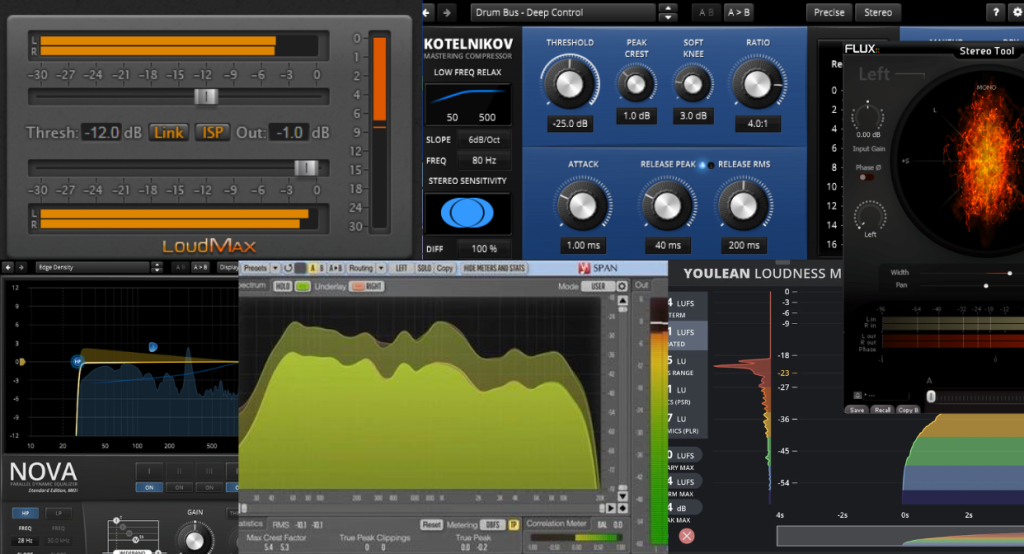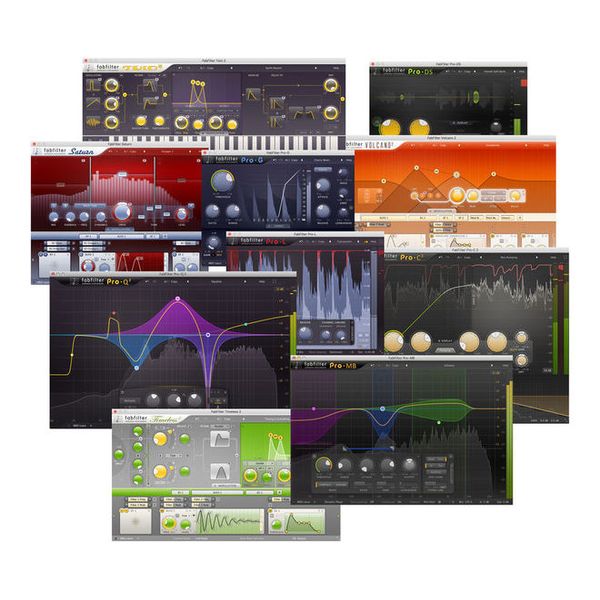Free vs. Paid Plugins: Are Premium Audio Plugins Worth the Price?
Plugins are vital in shaping the sound of our mixes and productions. But with loads of options available, how do you decide which ones are the right tool? You could decide to spend a small fortune on premium plugins, or you could opt for countless free alternatives that do a similar job.
Let’s dig into the debate between free and paid plugins, and shed some light on when it makes sense opt for premium tools and when free plugins might be sufficient.
Overview of Free Audio Plugins

Free plugins are popular among beginners and pro producers alike, due to the range of functionalities without any upfront cost, making them an accessible option for all. They can range from basic EQs and compressors to more experimental creative sound design tools. Free plugins today are also real contenders in quality of build and design.
Advantages of Free Plugins:
- Cost-effective: If you’re dealing with a tight budget, the obvious choice is to opt for spending as little on plugins as possible. There’s no financial risk in downloading them to try, and some of have pro features at no cost.
- Diverse Selection: There are endless free plugins online, some are basic, and some offer incredible features. There are likely to be free compressors, reverbs, and synthesizers that can cover most needs for a typical project.
- Lightweight: Many free plugins will have fewer features, which can be an advantage if you have less powerful hardware and CPU usage is a concern.
Limitations of Free Plugins
While using free plugins can be useful from time-to-time, some also come with limitations that might make them not so great for more advanced or professional work.
- Limited Features: Free plugins usually deliver a basic feature set. While this may be what you’re after, they may lack functions like multi-band processing, side-chaining, or advanced modulation that paid plugins offer.
- User Interface: Some free plugins have user interfaces that are slow, clunky and less intuitive compared to their well-designed premium counterparts. This will slow down your workflow, especially in more complex projects.
- Support and Updates: The biggest drawback to using free plugins is the lack of regular updates or tech support. You may have to wait a long time for bugs to be fixed, if they ever get fixed. Paid plugins come with customer support, user manuals, and regular updates to address issues, fix bugs and improve functionality.
- Sound Quality: Some free plugins do sound great, but there is a noticeable difference in the overall sound quality and processing depth during A/B testing with their premium counterparts. This becomes more noticeable during highly attuned tasks like mastering or handling dense mixes. Paid plugins tend to use higher-quality algorithms, sometimes modeled on classic hardware, that leads to a good-quality sound.
Overview of Paid Plugins

Paid plugins are usually developed by companies with resources and R&D behind them, generally translating into superior sound quality, advanced features, and better user experience. You’d be better off using paid plugins in professional high-stakes environments like film scoring, mastering, and commercial music production.
Advantages of Paid Plugins:
- Advanced Features: Premium plugins usually offer more functionality. A paid compressor might include sidechain functionality, parallel processing, or even AI-assisted settings that adapt to the incoming audio. This level of control and complexity is often missing from free plugins.
- Professional Sound Quality: Paid plugins use more sophisticated algorithms, resulting in better sound. They are often modeled on classic and vintage analog hardware (e.g., UAD plugins) and provide the warmth, depth, grit and characteristics that is harder to achieve with free plugins.
- Better Support and Regular Updates: Access to customer support, documentation, and tutorials will usually come with premium options. Additionally, developers release regular updates to improve functionality, fix bugs, and stay compatible with your setup.
- Polished User Interface: Paid plugins typically offer intuitive, visually appealing, and highly functional interfaces that make improve workflow so that complex tasks are much easier to navigate.
Limitations of Paid Plugins
You’d think it’s all be sunshine and rainbows on the paid side of things, but they also don’t come without some downsides.
- Cost: The cost might just be too much for some hobbyists or producers working on simpler projects. Premium plugins can come with premium price tags, especially if you’re buying a set or a bundle.
- Overkill for Simple Projects: Paid options might offer more features than the average user needs. If you’re working on basic home recordings or small unpaid projects, the extra options available in paid plugins might just be unnecessary.
- Hardware Requirements: If producing on more basic hardware high-end plugins often come with a trade-off in CPU usage. Advanced processing can be a strain your machines resources, leading to lag or DAW crashes in large projects.
Best of Both Worlds: Using Free and Paid Plugins Together
You don’t even have to choose between free and paid plugins exclusively. Many producers will use a combination of both, and pick the best after assessing the task at hand. For routine tasks like basic EQ or compression, free plugins can often do the job just fine. When more advanced processing or creative tools are needed, maybe premium plugins come into play. By combining free and paid plugins, you can maximize your efficiency and creativity without breaking the bank.
Remember – RouteNote Create subscriptions start from as little as $2.99. You also get 10 FREE credits to spend on samples along with access to our FREE sample pack bundle when you sign-up!
